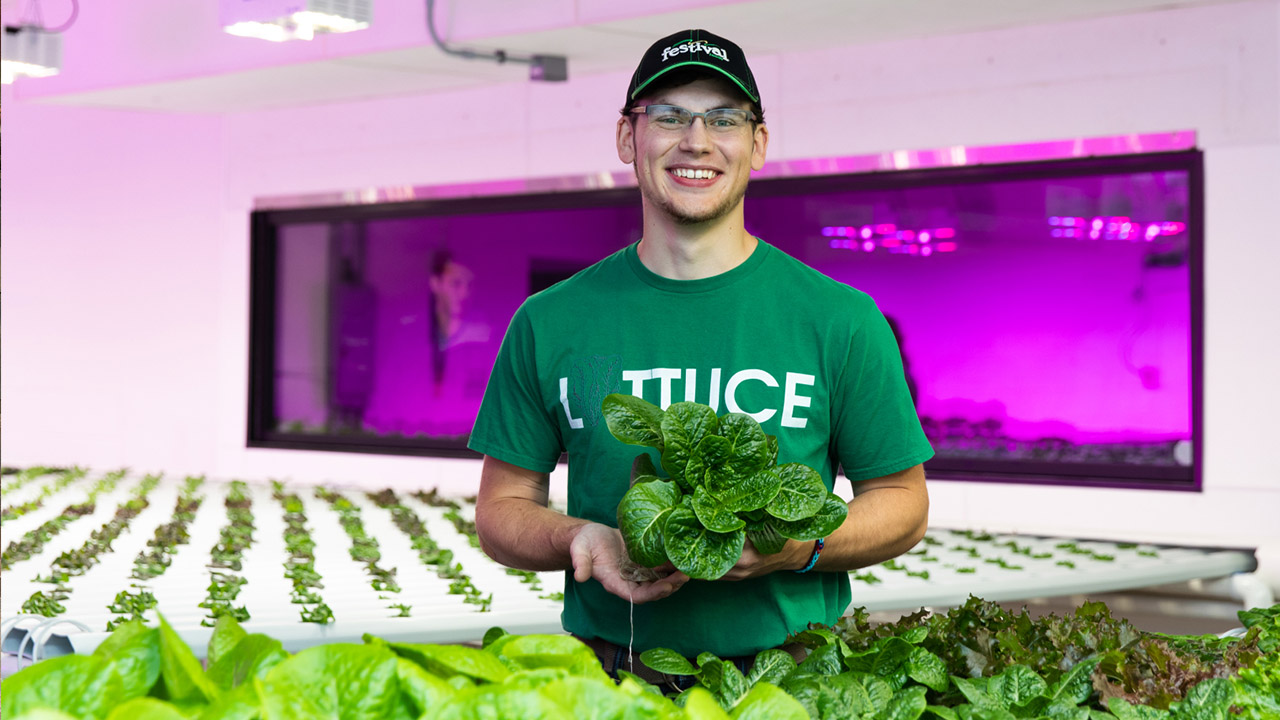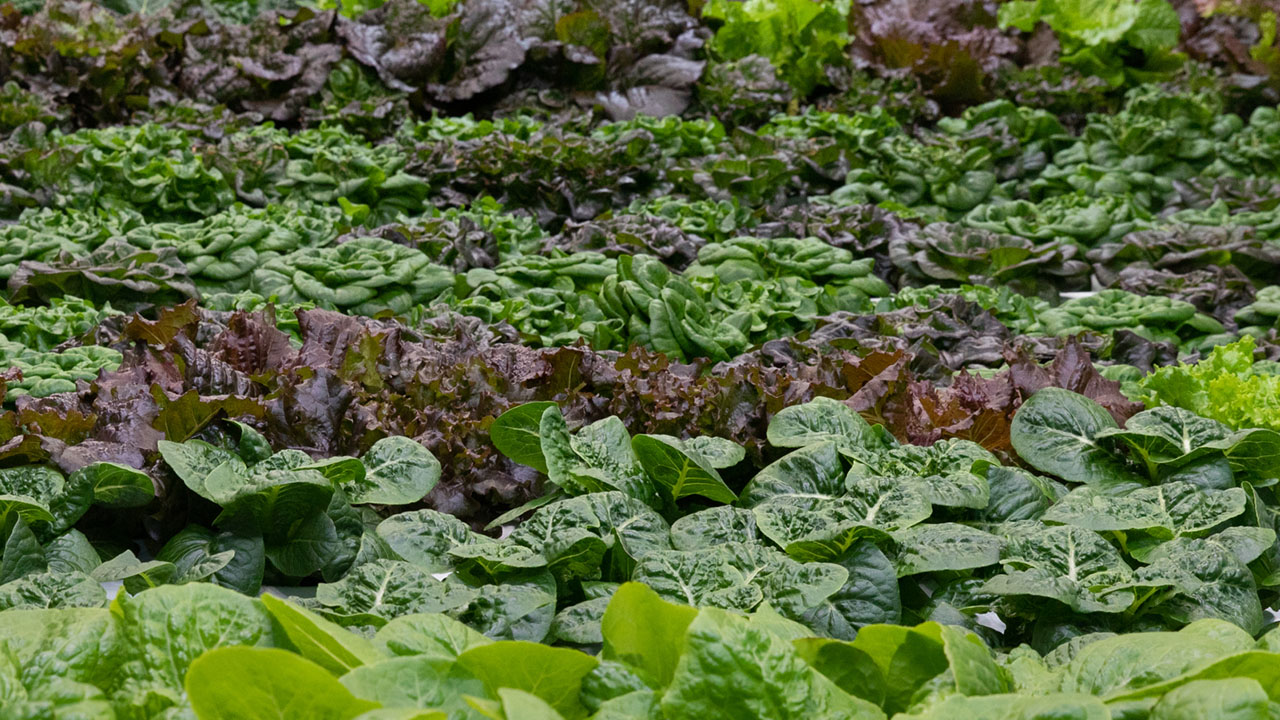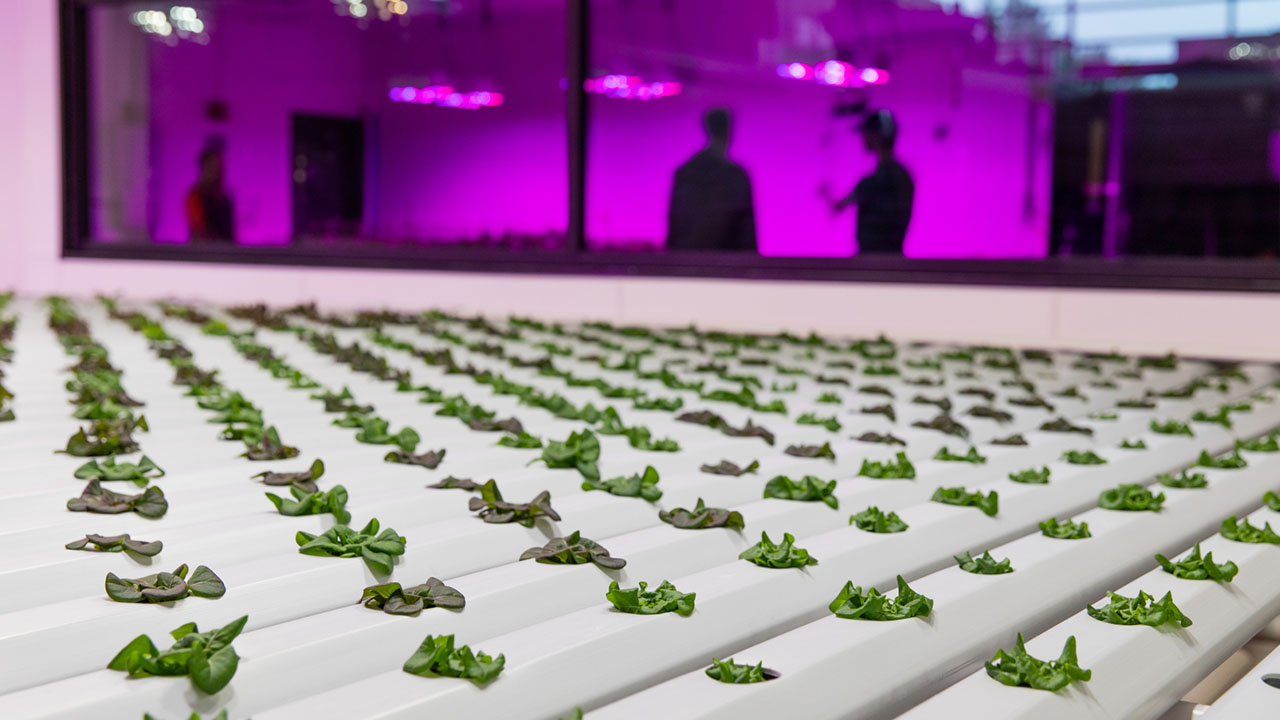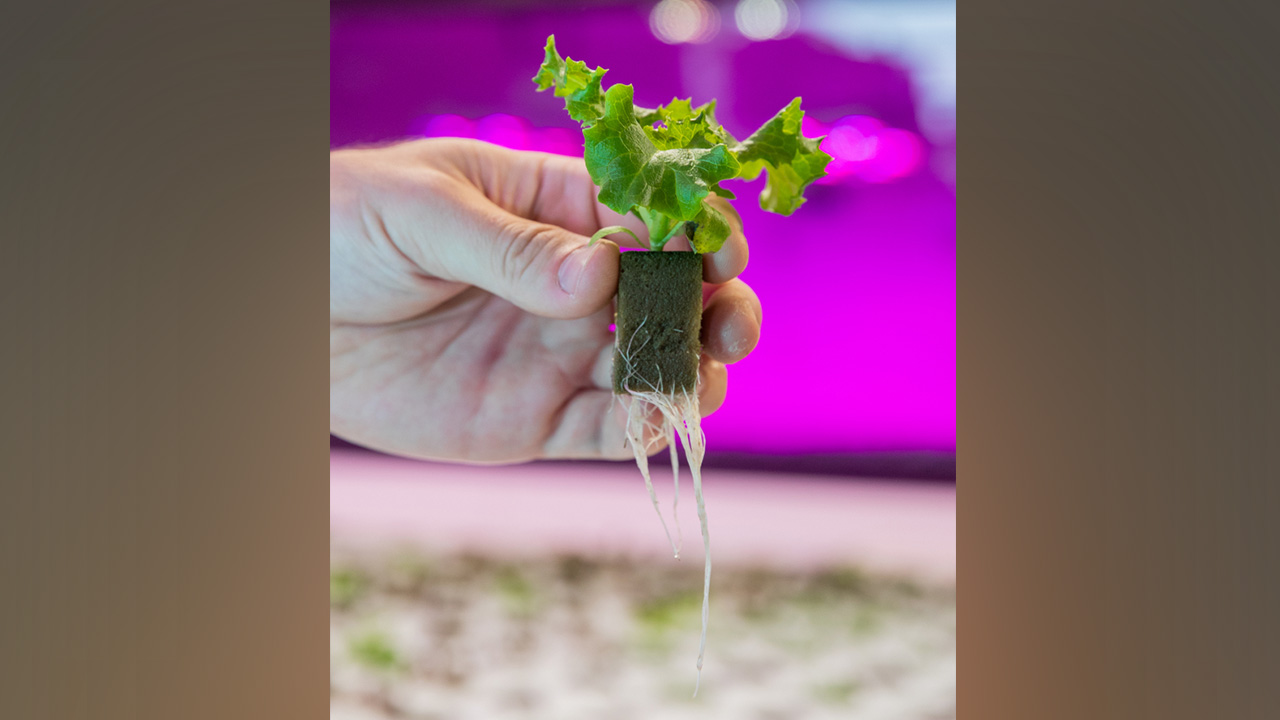



Beginning this year, students at the University of Wisconsin-Platteville will have access to fresh lettuce, grown on campus year-round through a new hydroponics student-managed business. Located in Glenview Commons, the 1,500-square-foot hydroponics space, built and operated solely by students, will supply nearly all lettuce used by UW-Platteville Dining Services.
On Thursday, Sept. 12, the community will have an opportunity to view and learn more about the hydroponics student-managed business at a ribbon-cutting ceremony and open house, from 9 a.m. to 1 p.m. in Glenview Commons.
Dr. Rami Reddy, director of UW-Platteville’s School of Agriculture, conceived of the idea nearly two years ago, after he visited EARTH University, in Costa Rica. “We were very impressed by their student-managed businesses and projects,” he said. “But they are in the tropics, and can do anything outside, unlike us here.”
Reddy’s solution, at that time, was to create a small hydroponics unit in the Pioneer Greenhouse, which helped kick start Pioneer Produce – a student-run business that delivers fresh produce to customers. Soon after that, Reddy was approached by Michael Ernst, director of Dining Services, who was interested in providing locally sourced produce in the dining halls, and in a cross-campus collaboration, the new hydroponics student-managed business was created.
Zack Peterson, an August 2019 graduate from Holmen, Wisconsin, and Kylee Crist, an environmental horticulture major from Dubuque, Iowa, spent the summer building the hydroponics unit, which includes four independent benches and their associated life support systems, as well as a browser-based control system. In total, the system can house up to 7,000 plants at their varying stages. Each bench is a recirculating system that provides plants with nutrients through a thin film of water. This nutrient film technique only requires a few gallons of purified water per day to compensate for evaporation. A 300-gallon feed tank automatically tops off these benches and gives a reserve supply of filtered water for use in a quarterly water change. Twenty-seven LED grow lights are used to ensure repeatable and uniform crops regardless of weather or season.
The students typically spend three to four hours a day in the hydroponics room, with harvesting and transplanting days taking the most time.
“I learn something new every day,” said Crist. “It’s always a learning experience. I really enjoy working here because I like watching the plants grow. It’s really therapeutic to come in and work with them.”
To date, Peterson and Crist have already harvested 250 pounds of lettuce. Based on demand, after the first harvests, they were able to adjust the varieties of lettuce they grow.
“We started out producing what we thought would be good for Dining Services, and then the students picked out what they liked and didn’t like, so now we are adjusting,” said Peterson. They are now focusing on four lettuce varieties – Monte Carlo Romaine, Spinach, Heritage Blend and a small quantity of Salanova leaf lettuce.
Peterson and Crist started with a six-week seed to harvest schedule, but recently decided to adjust to a seven-week schedule to increase the weights. “We are up to full production right now, which is 1,000 heads a week,” said Peterson. “But once we drop down to the seven-week schedule, we’ll get 755 a week, but it should increase our weights by about .1–.2 pounds per head.”
According to Reddy, the project brings a number of benefits to campus, not only providing fresh, healthy produce, but also exposing the larger community to a model of sustainability.
“When we’re on full production, we are growing 6,000 plants, give or take, using about 25 gallons of water daily,” said Peterson. “This is approximately a 95% water saving compared to field production.”
The hydroponics system is almost fully automated and online. Everything from leak detectors, cameras, grow lights and carbon dioxide and oxygen monitors are accessible from a smartphone. “We can turn the lights on or off from the phone, and it also individually tells us the wattage of every light and if it’s online or offline,” explained Peterson. “We can set up different zones – for each bench – which lets us go in and individually program everything down to the minute and percentage of the white, red and blue lights.”
Reddy said he hopes to see a number of projects branch off from this one. Potential future applied learning and undergraduate research opportunities could include installing solar panels, researching the grow light spectrum by changing the intensity and heights of the lights, and researching optimal nutrient mixes and pH levels.
According to Reddy, the project will also eventually provide funding for additional hands-on learning projects for students. “One day we will be operationally efficient and profitable, and then all profits will go back to the students to start new ventures like this – student-managed businesses, scholarships, grants and travel support,” said Reddy.
For more information about the hydroponics student-managed business or the ribbon-cutting ceremony and open house, contact Reddy at reddya@uwplatt.edu or 608.342.1327.